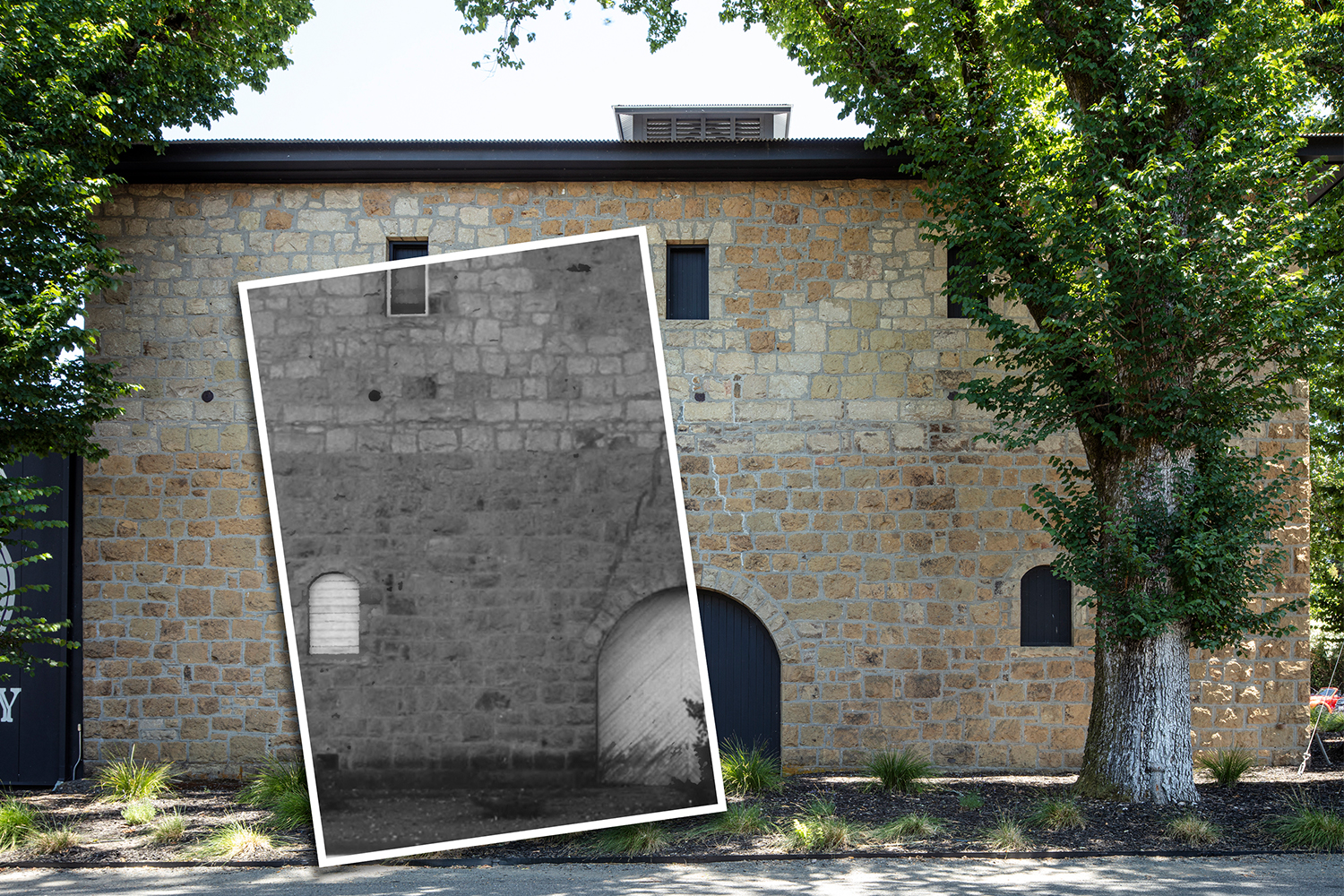As you travel down our quiet, tree-lined Larkmead Lane, you will know you have arrived at Frank Family Vineyards when the site of Napa’s third-oldest winery catches your eye. It is impossible to miss the grandeur of our Historic Stone Building. Frank Family has called these magnificent four walls ‘home’ for nearly 30 years, but our winery was not the first to occupy this iconic building. Indeed, the Historic Stone Building and surrounding grounds on which our winery and tasting room are built upon, have a rich and vibrant history dating back to the 1890s. We are honored to have inherited a century-long legacy of winemaking innovation and strive to carry on the tradition each day.
1892-1895: F. Salmina & Co.
The story begins with Felix Salmina, a Swiss immigrant who came to the Napa Valley looking for a better life. Joining his uncle, Baptista Salmina, the pair establishes their first wine business, calling it “F. Salmina & Co.” They lease the wooden structure located at Larkmead for their winery operations.
1905-1906: Construction of the Stone Building
With winery operations growing, Felix begins construction of the stone building in place of the existing wooden structure at Larkmead. To this day, engraved on the front of the building are the words: “1906, Larkmead Winery, F. Salmina & Co.”

Did you know? The Stone building was quarried out of stone from nearby hills. Each wall is three feet wide.
1920-1933: Prohibition Era
“Larkmead Winery” is shut down and winery operations become dormant due to Prohibition. The original company is disincorporated and two partnerships are formed. “Salmina Lands” owns all the vineyards and equipment. They continue to sell and ship grapes across the country from 130 acres. “Larkmead Vineyards” now becomes the operating company, producing and selling bulk wine under this new label.
1933-1958: A Leader in Winemaking
Larkmead Vineyards is a leader in winemaking technology. The winery is awarded world-wide recognition for cultivation and winemaking skills, including the Diplome d’Honneur at the Paris Exposition of 1937.
After the passing of Felix Salmina in 1940, the estate and Larkmead Vineyards changes ownership several times, although his son Elmer Salmina stays on as winemaker until 1947.

1958-1992: Hanns Kornell Champagne Cellars
Larkmead estate is purchased by Hanns Kornell and renamed, “Hanns Kornell Champagne Cellars.” A legacy of exceptional sparkling wines made in the méthode champenoise is born. The first to introduce this French sparkling winemaking technique to California, Kornell paved a new path for wine production in the Napa Valley. For the next 30 years, the winery is exclusively used to produce quality sparkling wines, a tradition Frank Family honors to this day.

1992-Today: Frank Family Vineyards
In the late 1980s when Rich Frank was in the middle of his 10-year term as the President of Disney Studios, he begins traveling to Napa Valley for weekend getaways from Hollywood. Falling in love with the wine country lifestyle, he purchases a Tudor home on a hillside vineyard in Rutherford. Two years later, the opportunity to purchase Hanns Kornell Champagne Cellars presented itself which leads to the start of Frank Family Vineyards. Rich’s interest in wine began as a passion but has grown into a business over the years. Producing just 200 cases in our first year, Frank Family now produces nearly 150,000 cases annually. With each bottle, we pay tribute to the extraordinary winemaking excellence that has come before us, while adding our own chapter to the building’s incredible history.
Did you know? The name “Larkmead” comes from swarms of Meadowlarks that enjoyed roaming the property. Before the estate became a winery, it was the old country home of Lillie Hitchcock Coit, of the Coit Tower in San Francisco. The firefighter patroness would make frequent visits to escape the city. During her trips to the countryside she enjoyed watching the birds and ultimately named the property “Larkmead.”






